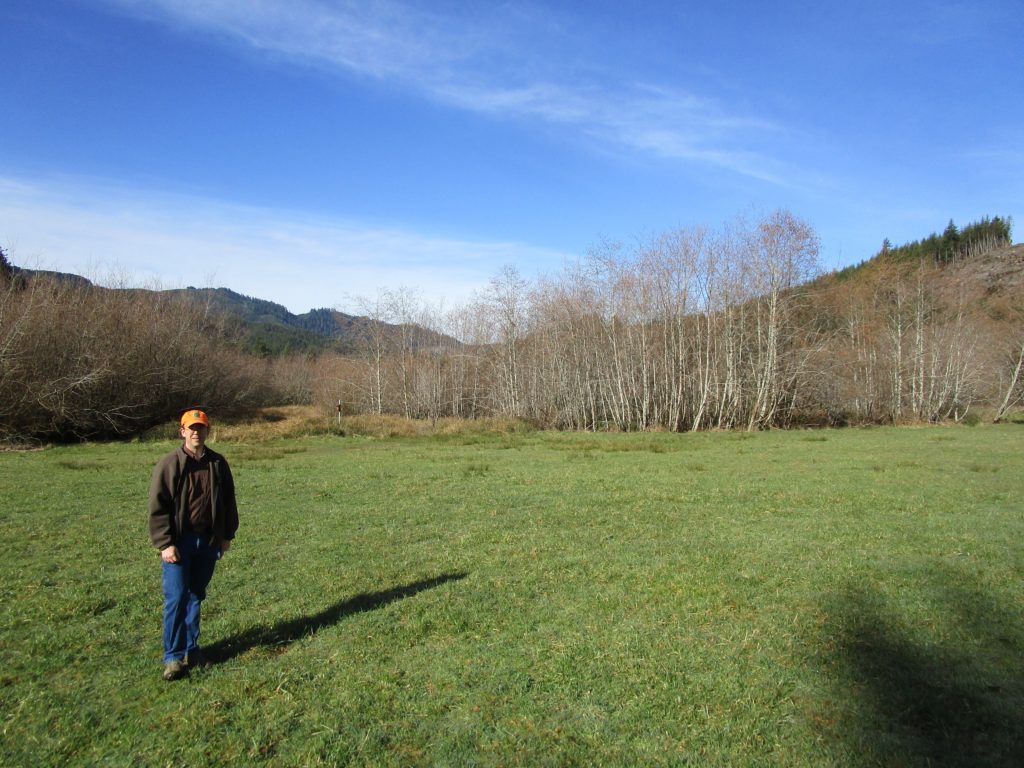
By QUINTON SMITH/YachatsNews.com
The pasture stretches for a mile, bordered on the south side by the Yachats River. In the middle are meandering bush-lined ditches filled with water for frogs and bugs. Swallows have returned to dip and dive and fight over bird boxes along the edge of the marsh.
It is the only state-owned elk habitat on the central Oregon coast — 141 acres of winter and spring forage for the 350 elk living in the hills of the Yachats valley.
But it’s also tinged with sadness for the Oregon Department of Fish and Wildlife biologists who manage it.
The Tami Wagner Wildlife Area six miles up Yachats River Road is named for the ODFW assistant district wildlife biologist who advocated and cared for the refuge. Wagner, 52, was killed Oct. 25, 2010 in a traffic accident near Toledo while hauling equipment to the site.
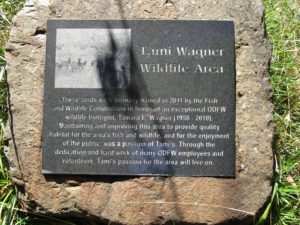
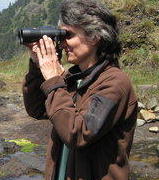
“She loved this place,” said Jason Kirchner, ODFW’s regional biologist for the central coast. “She spent a lot of time here and helping organize volunteers. She was so devoted to wildlife, to co-workers and to friends.”
Now it’s Kirchner’s responsibility to oversee the property.
His voice rises with excitement as he leads a tour of the largest part of the wildlife area, appropriately called the Big Field. The smaller Bridge Field is to the west; the Grange Field just a half mile up the road. ODFW manages another, more remote 37-acre field along the South Fork of the Yachats River.
ODFW bought the land from a local family for $160,000 in 1977 to grow grass as winter forage for elk, helping keep herds healthy and to lure them away from damaging fields of cattle farmers in the valley. The property also allows fishing access to a prime section of the Yachats River and for hunting during the fall.
Elk love grass. But Kirchner says the amount of forage in the adjacent Siuslaw National Forest decreased as logging declined. That pushed them more and more into the valley’s fields during the winter and spring.
“Our goal is to have them graze here in the winter months when there’s no forage in the forest,” he says. “They don’t stray too far. They stay in the Yachats valley.”
Kirchner estimates the elk population near the wildlife area at 75 with 300 to 350 elk in the entire valley. That’s down from 20-30 years ago, he says, mostly due to habitat changes – more logging means more forage — in the national forest.
Management pretty simple
Managing the area is relatively simple. Just let the grass grow. Two local farmers have a contract to harvest hay in the summer. Total management costs aren’t too much, says Kirchner, no more than $4,000 a year.
ODFW crews spray aquatic-safe weed killer with crews on ATVs using backpack sprayers to keep down broadleaf invasive grasses and some ferns. Crews have dug out canary grass, a hard-to-control invasive that can take over wide swaths of land if left unchecked.
“We only target what we want to get,” Kirchner says. “It’s a focused effort.”
ODFW gets occasional help from volunteer groups to remove old fences, cut weeds, do general labor – and built the swallow nesting boxes.
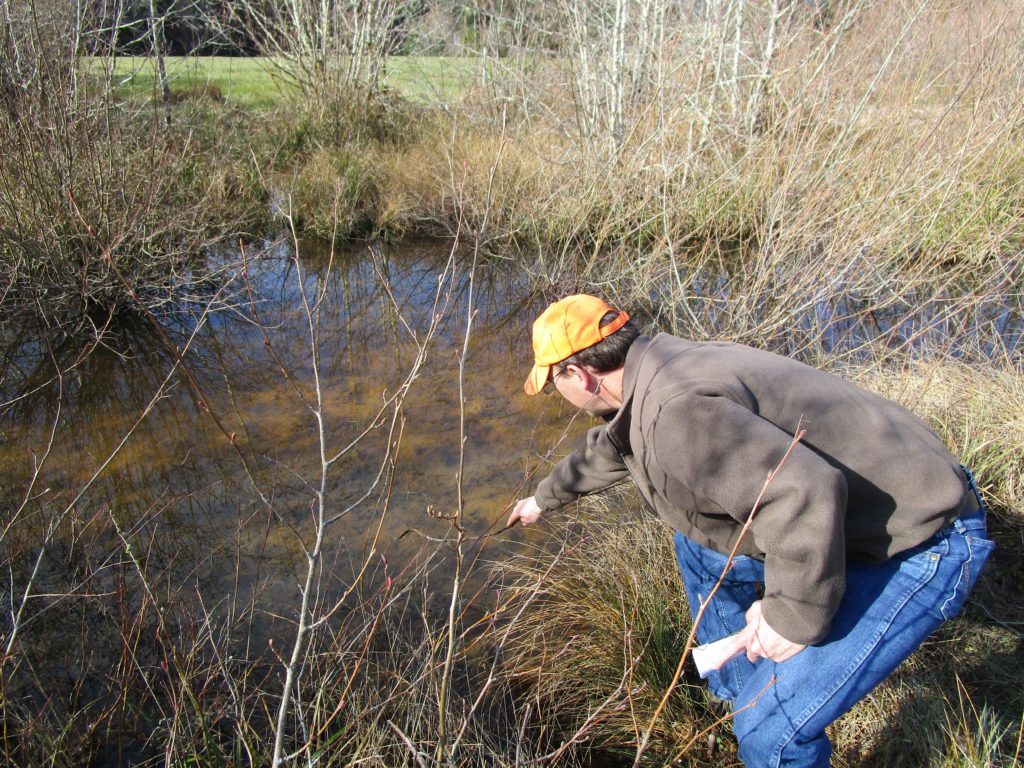
A natural drainage area in the middle of the Big Field was enhanced by digging channels and depressions to collect water and by planting trees to provide shade and protection. They also placed big logs in some larger wet spots. It’s now a home for frogs, snakes, birds and other wildlife.
“It creates a lot more diversity in here, not just the grass,” Kirchner says.
Elk spend their days hunkered down in the nearby hills, moving into the three fields at night to feed. Although there are occasional problems with vandals or poachers, Kirchner says a thick border of trees along Yachats River Road on the north side of the refuge helps “block bad people from doing unethical things.”
For the most part, the area is left for the elk and the occasional fisherman or birdwatcher. It’s the only such area from Cascade Head in the north to Reedsport in the south and the crest of the Coast Range to the west.
“It’s unique because we have a lot of wetlands, elk habitat, the river — everything related to wildlife,” Kirchner says. “This is our wildlife area for the mid-coast. It’s a beautiful spot.”
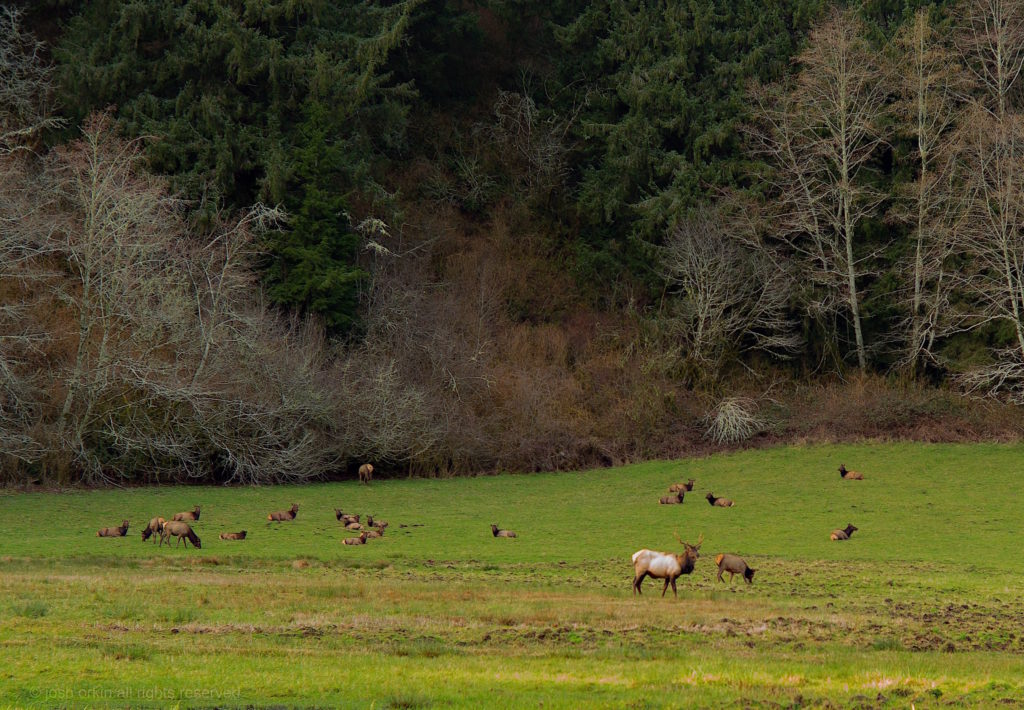



This is a wonderful article. I moved to Oregon in 2004 from being a native in Georgia. I knew nothing of anything in Oregon and landed in Eugene with my two teenagers. They grew up, graduated, found great jobs, married, and will never leave this state As I became an empty nester I began researching areas to live. Of everywhere I looked into I became mesmerized with Yachats. I’m still in Springfield, but my heart lives in Yachats and one day soon I plan to physically live there also.
Thank you for this wonderful article on the elk and the history of how this wonderful place for them to peacefully live came to be. I’m very sad to learn the person who began this wonderful place lost their life too soon. I am happy that it lives on to be a much cared for place. In that way she will always live!!! Thanks again for this article allowing me to learn things I didn’t yet know!!! With gratitude!!